Friday morning after watching the full moon set in Jay Cooke State Park I drove over to Chambers Grove at Fond Du Lac in Duluth. The park has been upgraded and there is nice new short hiking trail that heads up river from the park. With the water so fast right now due to snow runoff, the trail does not yield any interesting wildlife. When the current slows down it will be fun to explore along this trail.
One sign of spring here in the Duluth area is White Pelicans return to the St. Louis River. Many different kinds of fish are now in the river to spawn from Lake Superior, and the pelicans are very aware of that fact. The clean-up of the river from my childhood days in the 1960’s is amazing. Back then the river was dead from industrial pollution. There are even sturgeon spawning again in the river! (sturgeon require extremely clean water)
I reached Chambers Grove shortly after sunrise at 6:15 am. However, I could have waited. The sun did not kiss the park and river where I was located till 7:00 am. The pelicans understood this fact, and huddled together with heads beneath their wings an attempt to stay warm. I took some short hikes and waited for the sun to finally appear. If you desire to photograph white birds it is important to use “first light”. Even 2 to 3 hours after sunrise, the whites will blow out in photographs.
White Pelicans First Light Photos and Video
Hey guys … Why did the Birders cross the road?!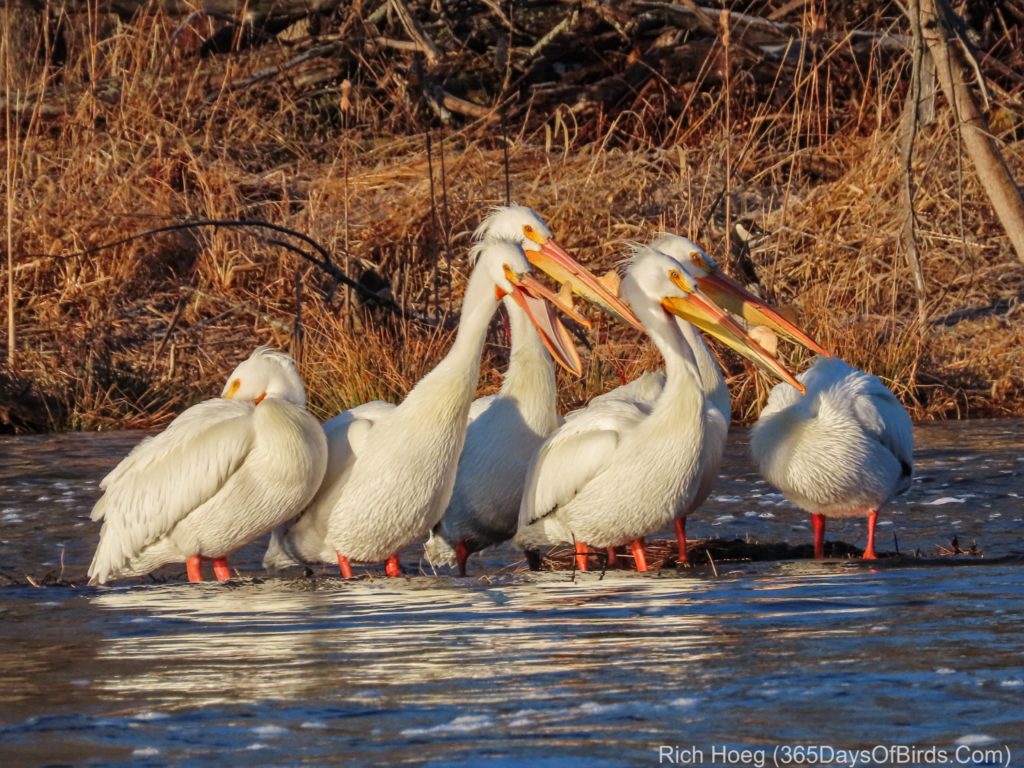
Discover more from 365 Days of Birds
Subscribe to get the latest posts sent to your email.
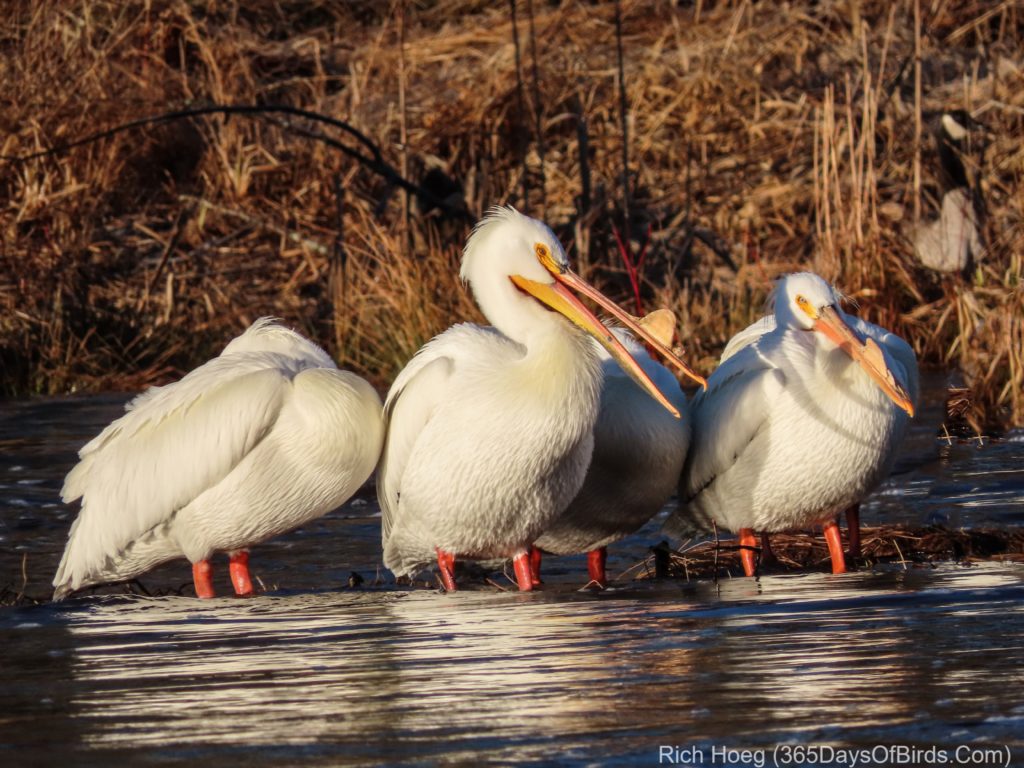
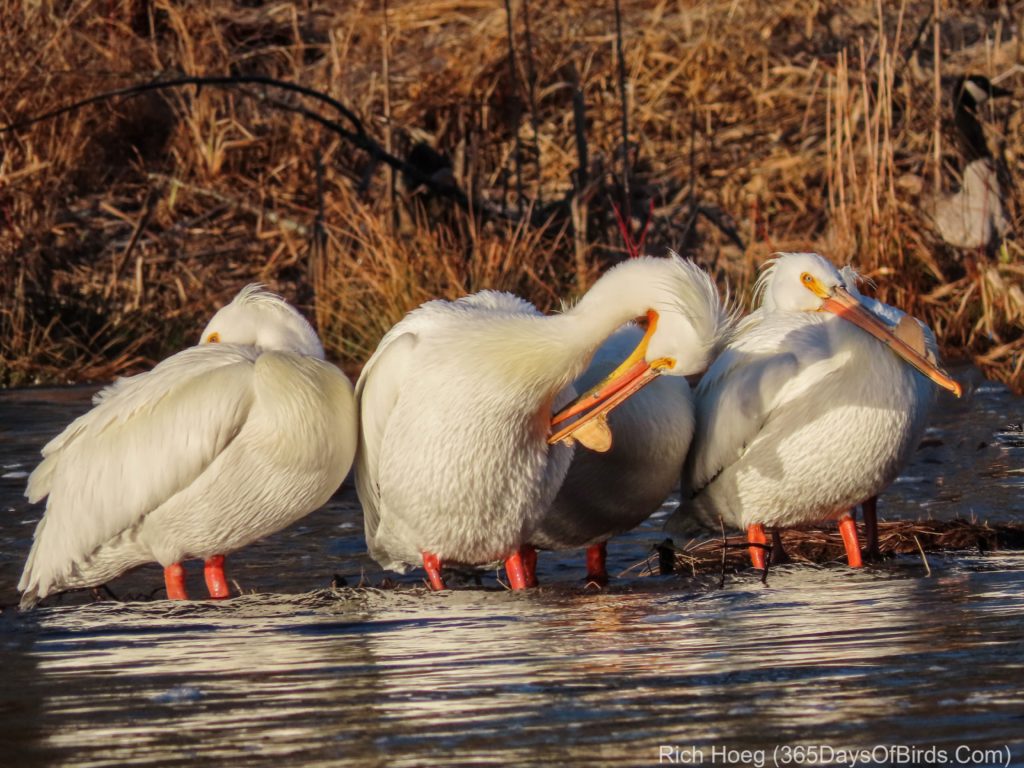
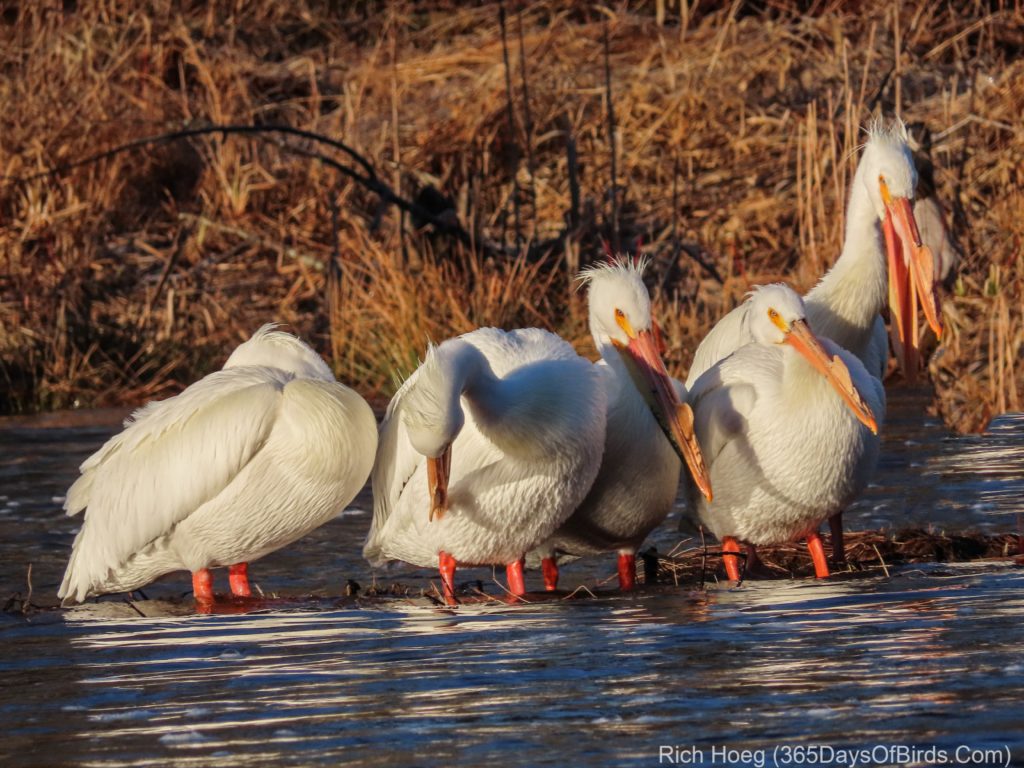
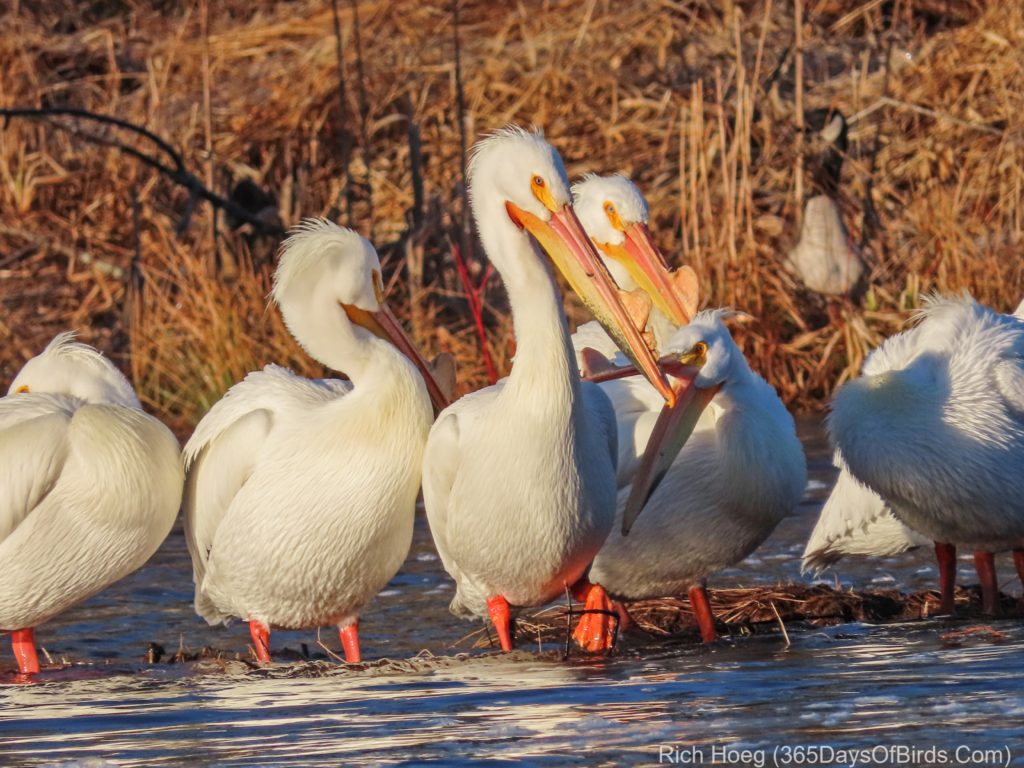
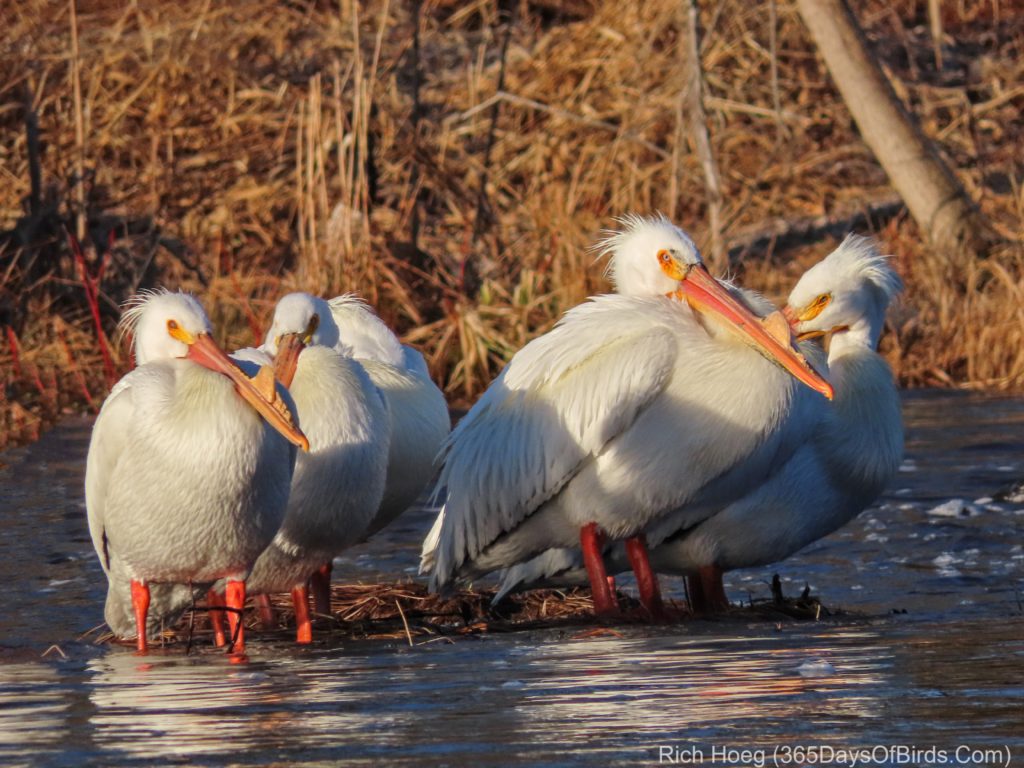
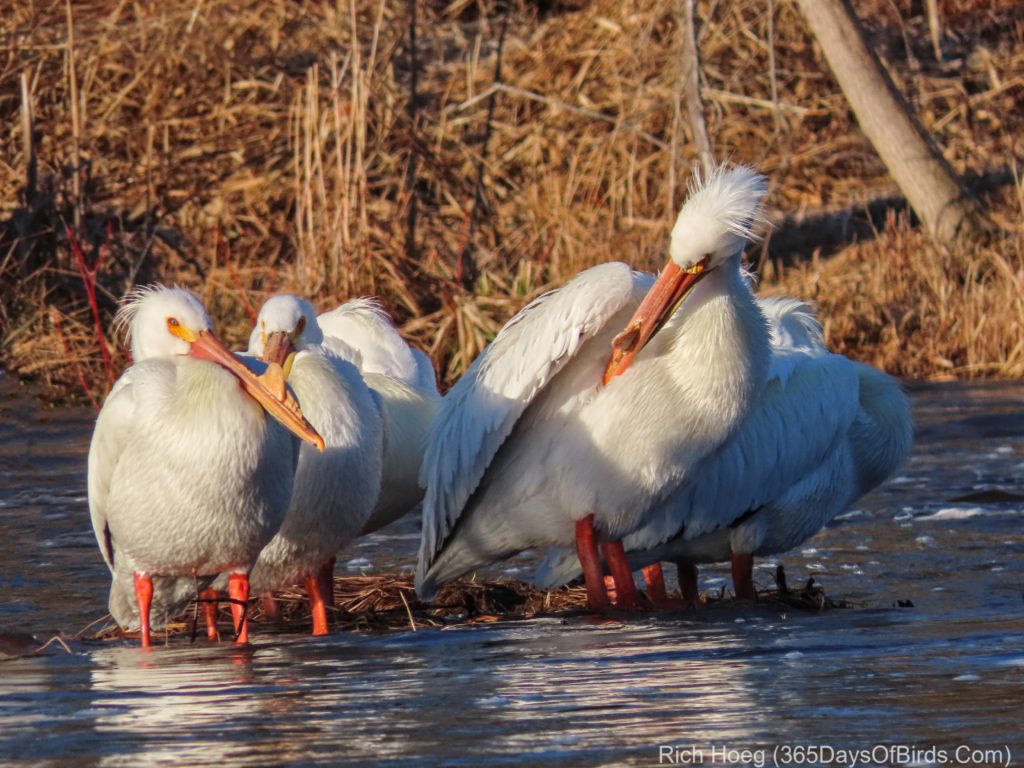
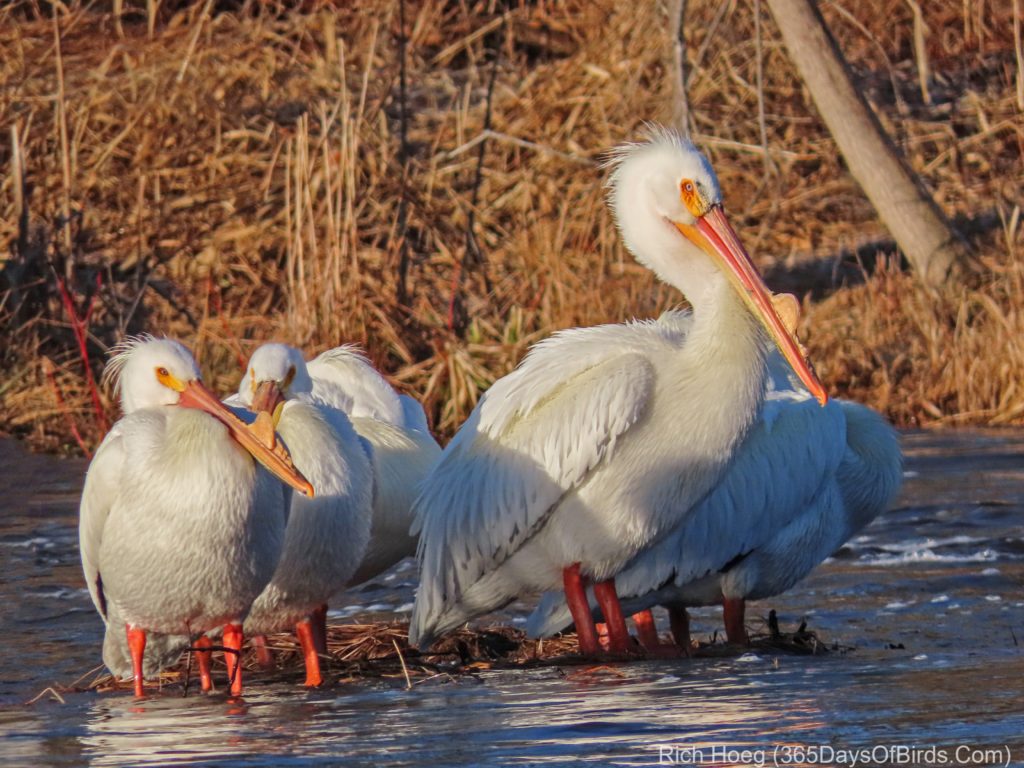
Sounds great. What time of year to pelicans usually come? Late April, early May, mid May? Thanks.
Kent: The pelicans use the St. Louis River as a place to both recharge and eat during their northward migration. This year, they were at Chambers Grove during the middle of April. In general that time period is a good estimate, but the date is highly dependent upon the Spring weather, ice out in the river, and ice out on local lakes which varies every spring.
Thanks, Richard.
Thanks for the “first light” tip. I would never have thought of that…., not that we have any pelicans up here in central Alberta yet, but I am (very very) patiently bidding my time. What about shooting pelicans at “last light” work, the sun is low and the light is warm, just like at sunrise?
In terms of light, both first and last light work equally well, but in the morning all birds which be much more active and the liklihood of getting interesting photographs is much higher as they will move around, preen and eat. The exception is owls, as night is their morning. With respect to most mammals, they tend to be dormant during the day and active at sunrise and sunset.
Beautiful! Thanks ever so much for sharing with all of us!